Clare Dowdy, Casson Mann designs exhibition to put Pacific Islanders first, Design Week, 1 April 2025
The new permanent space in Bremen’s Übersee-Museum brings local voices front and centre.
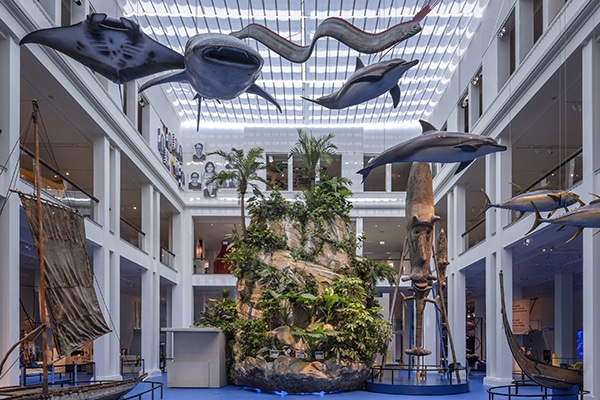
The Übersee-Museum in the northern German city of Bremen is reinventing how it presents indigenous voices.
The museum, which opened in 1896, has a collection which combines ethnology, trade and natural history.
Casson Mann was appointed to design The Blue Continent – Islands in the Pacific, a new 2000m² permanent exhibition which opened at the end of March.
The London-based exhibition designers have done plenty of projects in the UK and France. This is their first in Germany, which they won through a pitch.
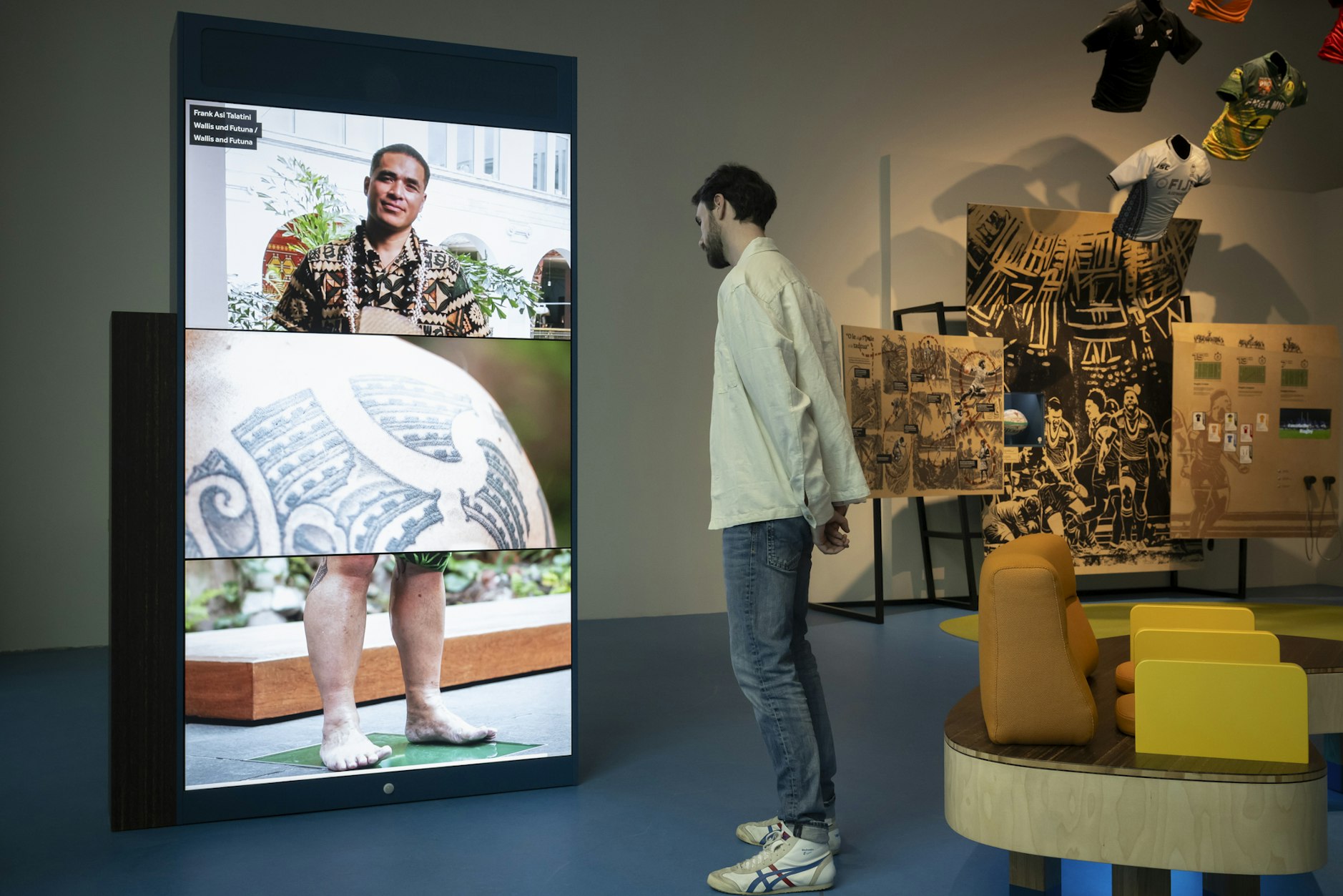
It’s the first space visitors to the museum come to. It was last designed in the 1990s, while the museum’s other two galleries – Africa and America – have more recently been updated and redesigned.
Previously, the museum treated other ethnicities as exotic, as was typical among cultural institutions at the time.
This exhibition is intended to immerse visitors in the vibrant cultures and urgent realities of Oceania, with information presented from the point of view of its communities.
Casson Mann was briefed to create a space which honoured these cultures, says Donacio Cejas Acosta, the agency’s project lead and lead designer.
This design challenges conventional museum storytelling by centring voices from the pacific in collaboration with the University of Samoa, Te Papa Museum, and Pacific communities, he says.
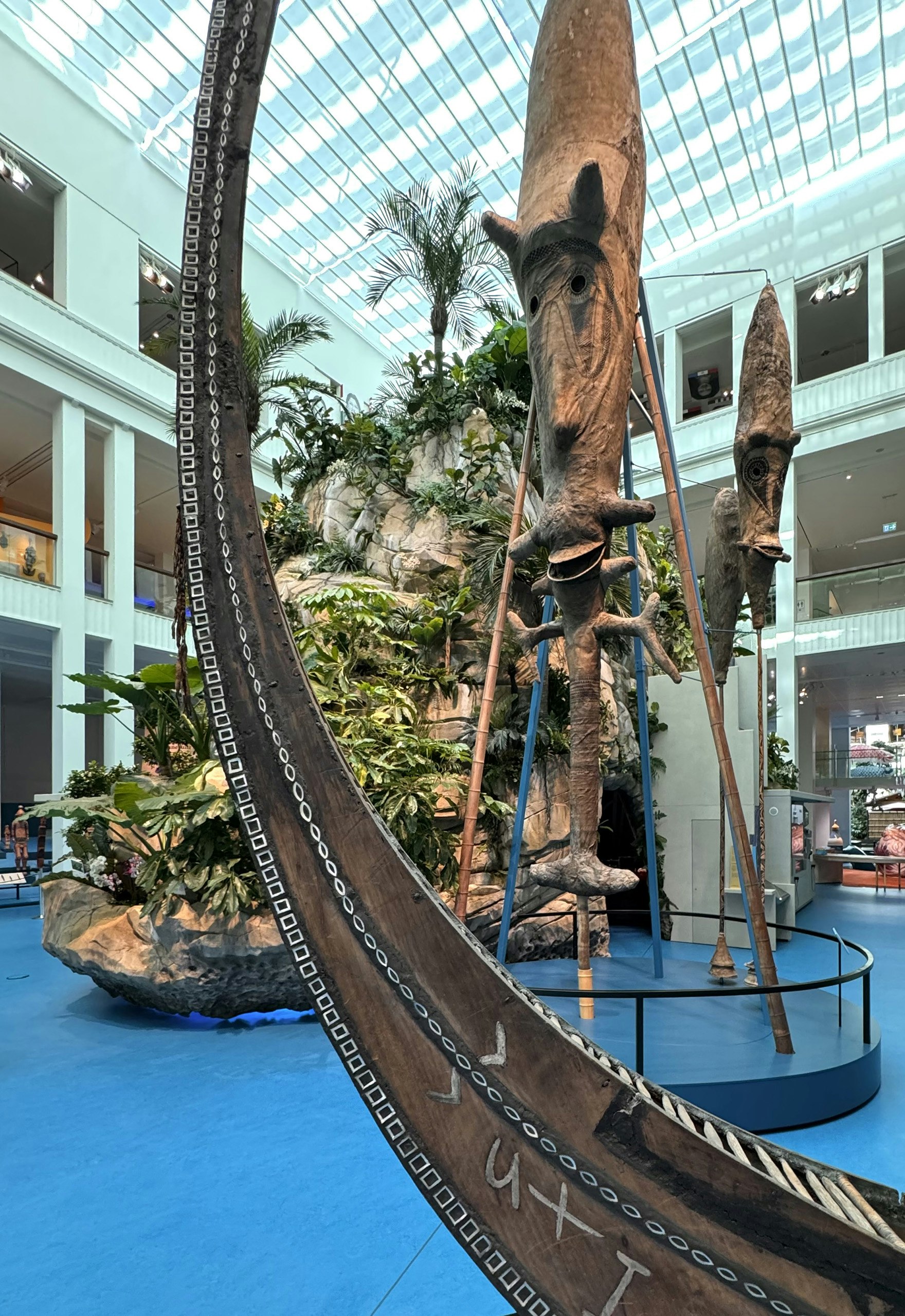
“This gallery sets the tone and helps the visitor coming from a European city to be transported somewhere else,” Acosta says. “The museum likes to use the term ‘change of perspective’.”
The centrepiece is The Island, an installation adorned with real plants and inspired by Pacific atolls. The designers have installed a lot of seating in this open area, which Acosta likens to a public agora, or gathering place. This also acts as the museum’s event space.
The Island explores the theme of diversity. Elsewhere, the exhibits are grouped around the themes of identity, colonialism, which addresses lived realities and lasting legacies through the perspective of the colonised, and resources, focusing on the fishing and coconut industries.
The gallery now aims to reflect Pacific perspectives on land and sea. “For Europeans, the sea is a barrier,” Acosta says. “For the people of Oceania, land and sea are not separated, they’re both their territory.”
To capture this, Casson Mann put down a sea-blue floor with a map, in the style of a stick chart. These are navigation devices used by the Pacific Island people, representing major ocean swells and the relative position of the islands.
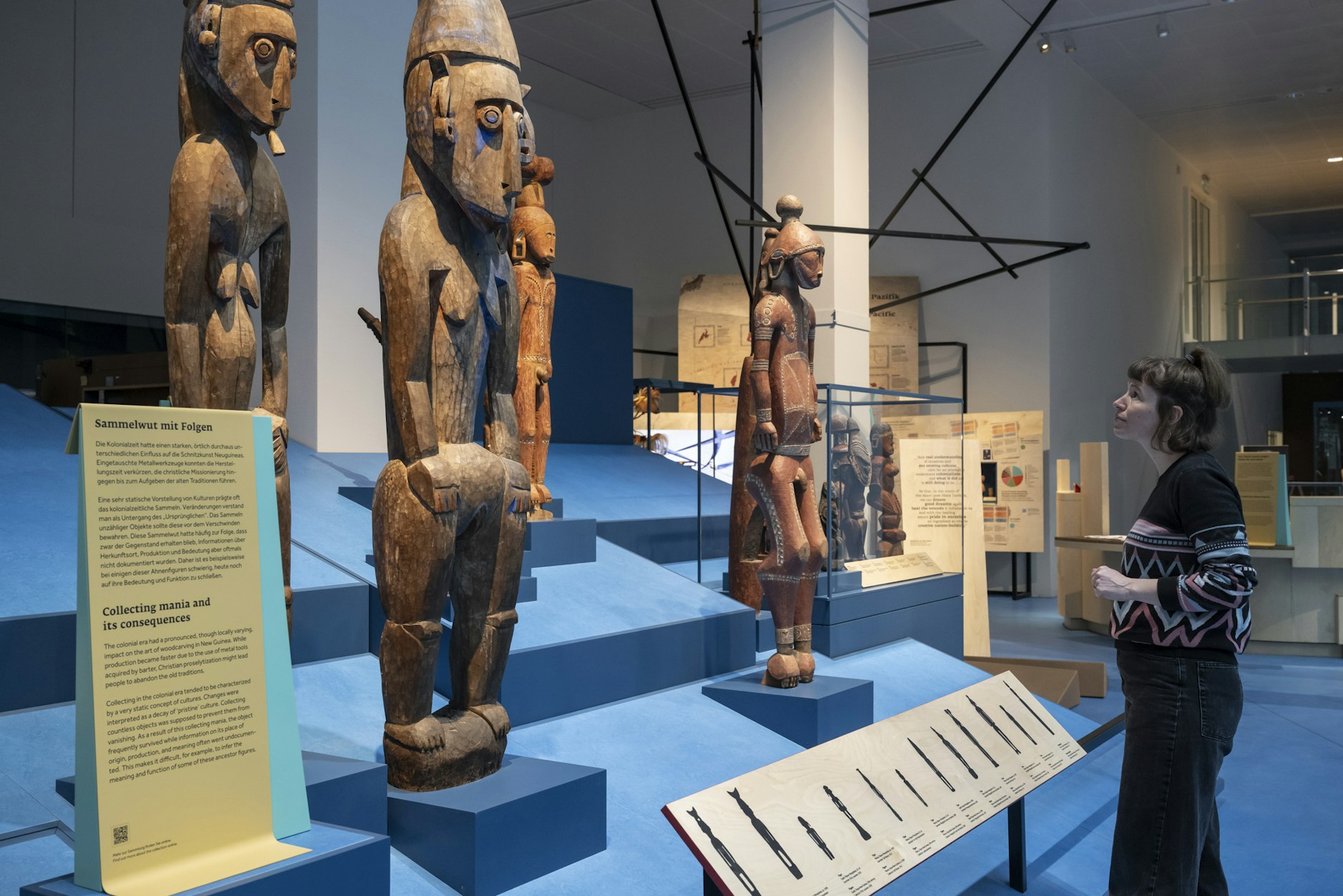
Rather than having solid display cases, the designers opened up the view across the ocean floor to give a sense of unbound Pacific territory.
The designers worked with the museum team to ensure that the storytelling, unfolding mainly through the texts, challenges traditional stereotypes.
“It’s not the museum of Bremen telling the story of Oceania,” Acosta says. “It’s local experts and the community of Oceania telling their story in their voices in the museum.
“We asked ourselves, who is allowed to speak in museums? Traditionally, it’s the museum. But this time, the museum didn’t want to be the only voice, and wanted to provide a platform for the voices from Oceania.”
Casson Mann did away with typical museum graphics and created banners, bearing calls to action and appearing as collective speech, like the rallying cry of Pacific climate activists – “We are not drowning, we are fighting.”
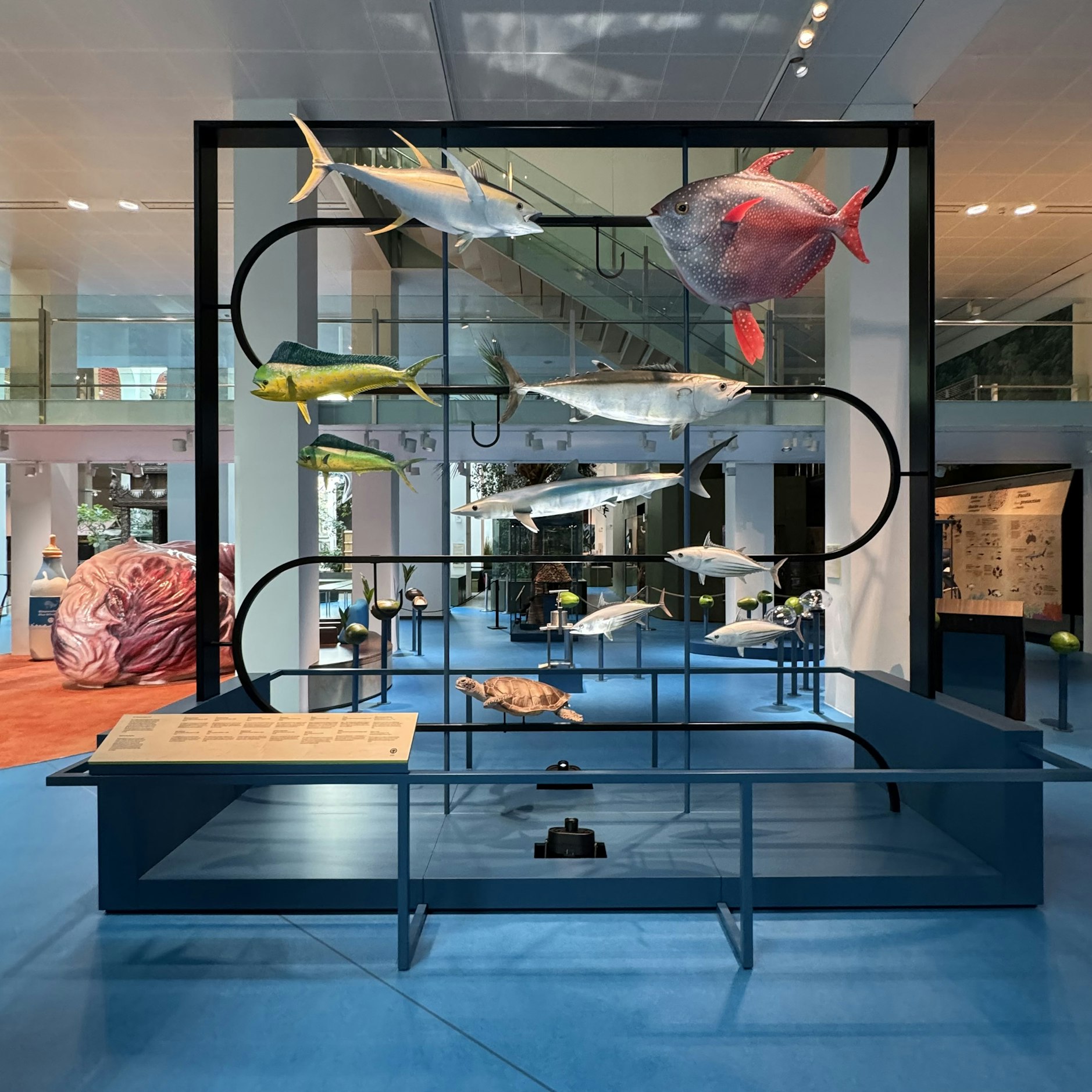
Sound installations, also designed by Casson Mann, feature commissioned poems by Emelihter Kihleng and Hinemoana Baker from Micronesia and New Zealand respectively, and are intended to immerse visitors in a range of indigenous perspectives.
The agency worked with Stuttgart-based graphic designer Daniel Unger on the graphics, and two families of fonts, Fedra and Effra, were used. The main graphic device is inspired by the islands’ traditional tapa, a patterned cloth made of bark.

